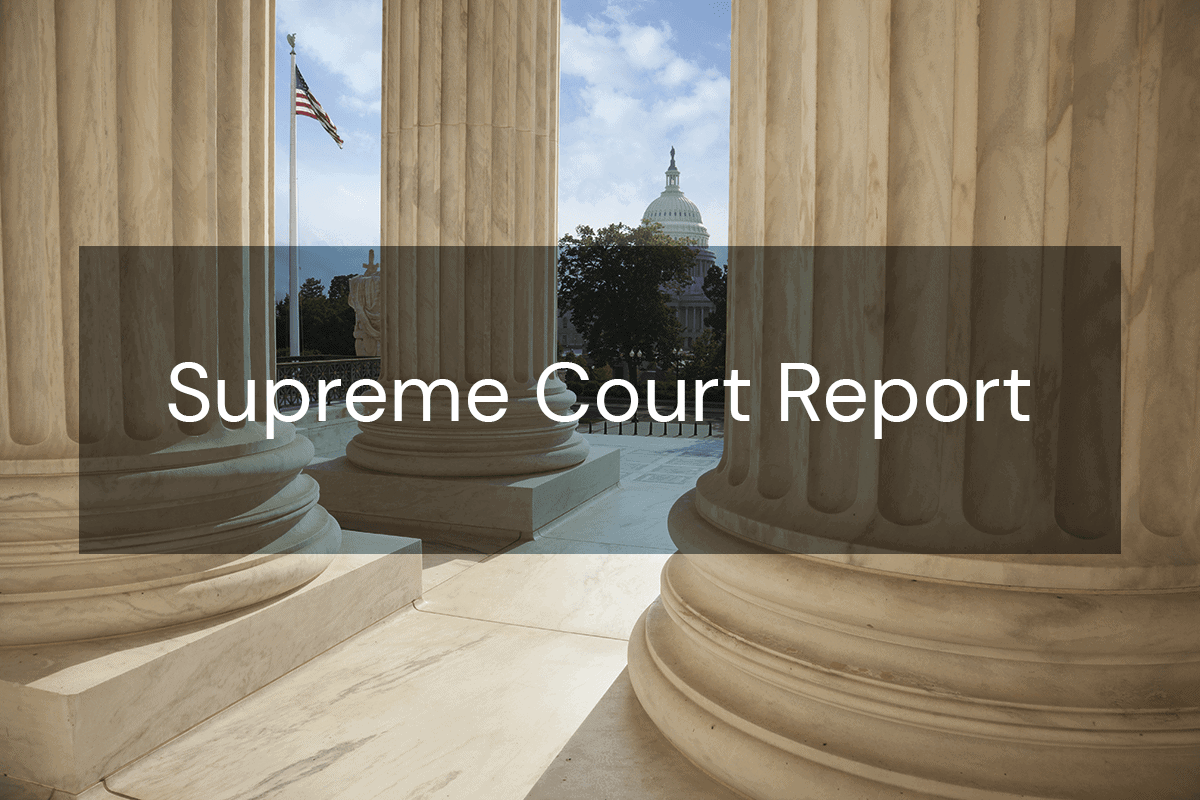-
 Director, Center for Supreme Court AdvocacyNational Association of Attorneys General
Director, Center for Supreme Court AdvocacyNational Association of Attorneys General

This Report summarizes opinions issued on October 18, 2021 (Part I); and cases granted review on that date (Part II).
Opinion: Rivas-Villegas v. Cortesluna, 20-1539
Rivas-Villegas v. Cortesluna, 20-1539. The Court summarily reversed a Ninth Circuit decision that had denied qualified immunity to a police officer who, after seeing a knife in a suspect’s pocket, briefly placed a knee on the side of the suspect’s back while removing the knife and handcuffing him. A crying 12-year-old called 911 reporting that she, her sister, and her mother were hiding in their home from her mother’s boyfriend, respondent Ramon Cortesluna, who was trying to hurt them and had a chainsaw. Petitioner Daniel Rivas-Villegas, a police officer, responded along with four other officers. After learning from dispatch that the girl and her family could not get out, Rivas-Villegas knocked on the front door, announced his presence, and ordered Cortesluna to come to the front door. Cortesluna approached the front door and, upon the police’s order, dropped the chainsaw. On the police’s orders, Cortesluna walked out of the house and toward the officers. Police ordered him to stop 10 to 11 feet from them. He did so, at which point an officer saw a knife sticking out of the front left pocket of Cortesluna’s pants. When he disobeyed police’s orders to keep his hands up, police shot him with a bean-bag round. Cortesluna then raised his hands over his head and got down on the ground. Rivas-Villegas then straddled Cortesluna, placing his left knee on the left side of Cortesluna’s back, near the knife. He raised both of Cortesluna’s arms up behind his back. Rivas-Villegas was in this position for no more than eight seconds. At that point, another officer removed the knife, tossed it away, and handcuffed Cortesluna. Cortesluna filed suit under 42 U.S.C. §1983, claiming (among other things) that Rivas-Villegas used excessive force in violation of the Fourth Amendment. The district court granted summary judgment to Rivas-Villegas, but the Ninth Circuit reversed. The Ninth Circuit found that its decision in LaLonde v. County of Riverside, 204 F.3d 947 (2000), clearly put Rivas-Villegas “on notice that his conduct constituted excessive force.” Through a per curiam opinion, the Court reversed, holding that Rivas-Villegas is entitled to qualified immunity.
The Court explained that “‘[q]ualified immunity attaches when an official’s conduct does not violate clearly established statutory or constitutional rights of which a reasonable person would have known.’” And “[a]lthough ‘this Court’s case law does not require a case directly on point for a right to be clearly established, existing precedent must have placed the statutory or constitutional question beyond debate.’” The Court continued that “[i]n an obvious case,” the excessive force standards set out in Graham v. Connor, 490 U.S. 386 (1989), and Tennessee v. Garner, 471 U.S. 1 (1985), “can ‘clearly establish’ the answer, even without a body of relevant case law.” (Quotation marks omitted.) “But this is not an obvious case. Thus, to show a violation of clearly established law, Cortesluna must identify a case that put Rivas-Villegas on notice that his specific conduct was unlawful.” The Court found that neither Cortesluna nor the Ninth Circuit passed that test. The Ninth Circuit relied solely on LaLonde. But “[e]ven assuming that Circuit precedent can clearly establish law for purposes of §1983, LaLonde is materially distinguishable and thus does not govern the facts of this case.” The Court explained that in LaLonde, the “officers were responding to a mere noise complaint”; “LaLonde was unarmed”; and the officer in LaLonde “deliberately dug his knee into [LaLonde’s] back when he had no weapon and had made no threat when approached by police.”



